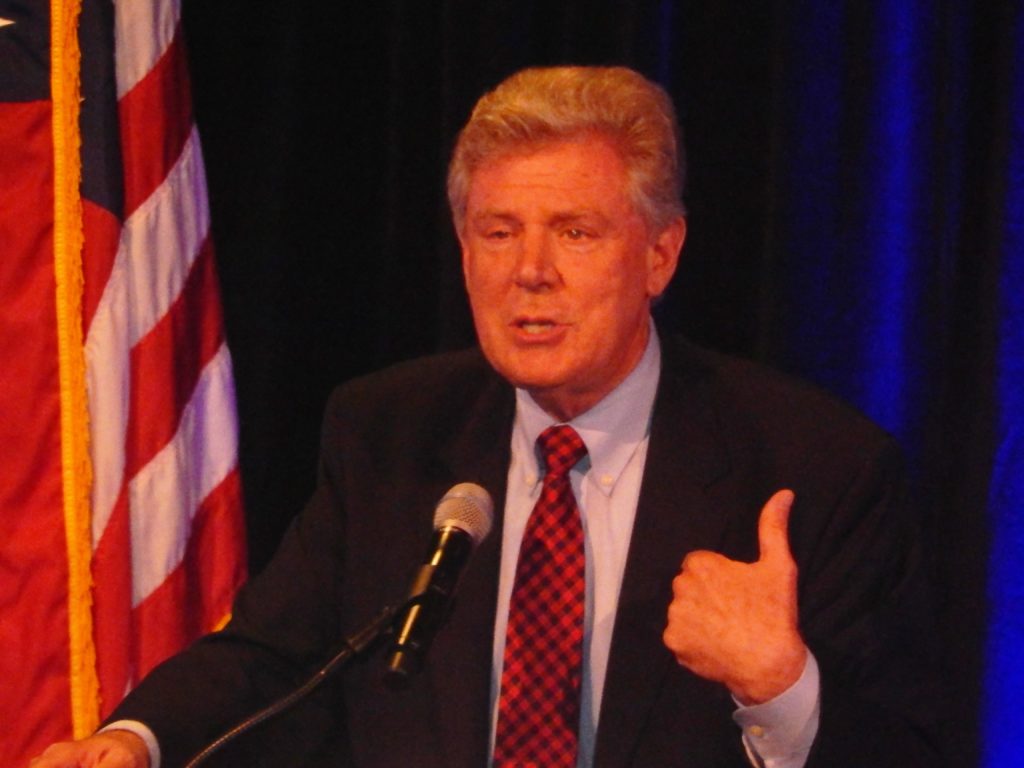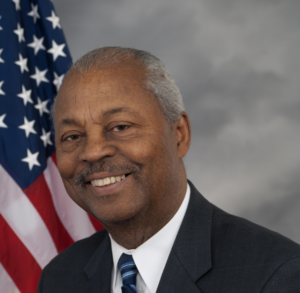Who Lost Afghanistan? Did We Ever Really Have it? Three NJ Reps Knew the Answer a Decade Ago

In the painful aftermath of the massacre at the Kabul airport that killed 13 U.S. Marines and scores of Afghani civilians there was a rush, as there always is on such occasions, to find someone to blame.
While Biden partisans may point to Trump and Trump’s boosters Biden, our extended misadventure in Afghanistan was one of those broad based bi-partisan Congressional and White House efforts that should give pause to the notion that such collaborations produce near divine results.
There were some members of Congress from New Jersey who wisely voted over a decade ago to support then Rep. Dennis Kucinich’s legislation to pull out troops out of Afghanistan.
“The American people oppose this war by a margin of two to one,” Kucinich said. “Nearly 2/3 of Americans say the war isn't worth fighting. We are spending $100 billion per year on this war. There are those who are saying the war could last at least another 10 years. Are we willing to spend another $1 trillion on a war that doesn't have any exit plan, for which there is no timeframe to get out, no endgame, where we haven't defined our mission?"
Kucinich continued. “The question is not whether we can afford to leave. The question is, can we afford to stay? And I submit we cannot afford to stay. The counterintelligence strategy of General Petraeus is an abysmal failure, and it needs to be called as such.”
VOICES IN THE WILDERNESS
Just 85 Democrats and eight Republicans backed the Ohio Congressman, who is now running to re-
[caption id="attachment_59743" align="alignright" width="300"] Donald Payne, Sr.[/caption]
Donald Payne, Sr.[/caption]
elected Mayor of Cleveland, a post he held in the 1970s.
Rep. Frank Pallone, former Rep. Rush Holt and the late Rep. Donald Payne Sr. were three of the 93 members that voted with Kucinich but were outvoted by the 321 of their colleagues looking to ‘stay the course.’
Even in the midst of such spectacular failure as witnessed with the complete overnight collapse of the Afghan government and army, the corporate news media has the very same former members of the military and intelligence services who promoted the policy frame the debate about what went wrong.
Invariably many of these “objective” experts link back to the non-profit think tanks supported by the military industrial complex that have been the only consistent beneficiaries of a misguided national security strategy that proliferated failed nation states, accelerated the ecological demise of the planet, set off the worst refugee crisis since WW II, and failed to anticipate the January 6 domestic insurrection.
A PERPETUAL DEATH MACHINE
And then there’s the massive civilian death toll that fuels a never-ending cycle of grievance and revenge which recruits one suicide bomber after another.
“The wars in Iraq, Afghanistan, Yemen, Syria, and Pakistan have taken a tremendous human toll on those countries,” according to the Watson Institute at Brown University. “As of November 2019, 335,000 civilians in these countries have died violent deaths as a result of the wars. Civilian deaths have also resulted from the US military operations in Somalia and other countries in the U.S. war on terrorism.”
We don’t hear enough from military experts outside the bandwidth of sanctioned geo-political thought. This ranges from ‘nobody could see this coming’ to the notion that the bi-partisan strategy was sound but just executed poorly as a result of faulty intelligence.
We need to hear more from former military officers like Prof. Andrew Bacevich on cable news and less from the former officials that stayed the course of a disastrous policy. He’s a West Point and Princeton University graduate and a career soldier who has taught at West Point and Johns Hopkins. His books include “Washington Rules: America’s Path to Permanent War” and “The New American Militarism: How Americans Are Seduced by War.”
Bacevich reminds us of the consequences of our nation ending the military draft and how that produced “the collapse of the tradition of the citizen soldier…a tradition that harkens back to the very beginning of the republic and continued until Vietnam…The G.I.s who went ashore in Omaha Beach were not professionals. They were in it for the duration.”
He goes on: “That system continued with Korea. That system continued with Vietnam too, and because of the folly of Vietnam and the anger of the American people, stimulated by that folly, the American people abandoned that tradition.”
WAR AS A JOBS PROGRAM
In 1968, the Nixon administration was beginning to learn an important lesson from the mass protest against the war in Vietnam. That war had become unpopular in no small part because it required a draft that drew on 2.2 million conscripts out of a potential pool of 27 million Americans.
The year before an influential paper written by Milton Friedman, the Nobel prize winner who turned free markets into a religion, advocated for an all- volunteer Army. Friedman’s reasoning was foundational to President Nixon’s creation of the Gates Commission, which he sat on along with Alan Greenspan, who was chairman of the Federal Reserve from 1987 until 2006.
The report noted that advocates for retaining the draft worried that not requiring all Americans to have some skin in the waging of war would “encourage military adventurism.” The Gates Commission countered that an all-voluntary force would “actually increase democratic participation in decisions concerning the use of military force” and denied it would result in unchecked “military aggressiveness.”
Bacevich maintains that in the years since the end of the draft, we have “become comfortable with having a military largely detached from the people drawn from that very militant part of our society and sent out to wage wars that never end” and no longer tasked with discrete and tangible goals. These are too often economic conscripts who are willing to make war making their profession.
Bacevich concludes, that while Americans believe we have the greatest army on the earth, the U.S. military rarely wins decisively in conflicts. Likewise, they rarely achieve the amorphic goals they are assigned — goals like “spreading democracy,” “eliminating terrorism,” or “bringing order.”
America’s status as a perpetual war-fighting machine came after the end of the so called Cold War, when policy experts held forums about what our country could have the opportunity to accomplish with the “peace dividend” that would be realized by the collapse of the Soviet Union.
The leveling of the World Trade Center, and the “protect the endangered homeland” consensus commandeered not just our wallets but our imagination.
‘WE’VE GOT THIS’
April 17, 1961, just weeks into his presidency, John F. Kennedy, opted to continue an Eisenhower administration plan to launch an invasion of Cuba staffed by Cuban nationals trained by the CIA who had told the new president it would be a covert operation.
In just 24 hours it was all over, with 114 of the ‘freedom fighter’ killed and 1,000 taken prisoner. It was a major public relations coup for Fidel Castro and a disaster for JFK who squeaked out an election victory despite criticisms he was too green for the job.
At an April 21, 1961 press conference Kennedy was pressed for details on what had transpired but insisted on being circumspect while taking full responsibility for what had happened on his watch.
“There's an old saying that victory has 100 fathers and defeat is an orphan,” he said. “Further statements, detailed discussions, are not to conceal responsibility because I'm the responsible officer of the Government--and that is quite obvious-but merely because I do not believe that such a discussion would benefit us during the present difficult situation.”
The Bay of Pigs was a clandestine operation. Information about it was shared on a need-to-know basis only.
By contrast, the United States operations in Afghanistan have been conducted on near automatic pilot for twenty-years in which the American public, in whose name the war was being fought, appeared to be wholly disinterested in.
Consider that in Afghanistan, the U.S. lost 3,936 private contractors, as compared to 2,448 members of the U.S. military. The overwhelming number of American households were completely insulated because nobody was coming for their sons.
The lack of public engagement was not lost on the political class that collects millions in campaign donations from the defense contractors that benefited handsomely from our open- ended commitment.
In 2016, I observed in a Salon column that Donald Trump and former Secretary of State Hillary Clinton had gotten through the presidential debates without ever mentioning what was then, five years ago, deteriorating conditions on the ground.
Incredibly, the month before the last 2016 debate, the Special Inspector General for Afghan reconstruction reported that while the U.S. Forces-Afghanistan reported there were 319,000 Afghan soldiers, the actual number may be only 120,000. The special inspector general, John Sopko, raised the distinct possibility that U.S. taxpayers, whose nation was already trillions of dollars in debt, were paying for “ghost soldiers.”
If we want to apportion blame for the human catastrophe that’s Afghanistan, we have to include the corporate media calliope that tells their target demographic the things it wants to hear and asks who it was that “lost” Afghanistan, when we really never “had” it.





